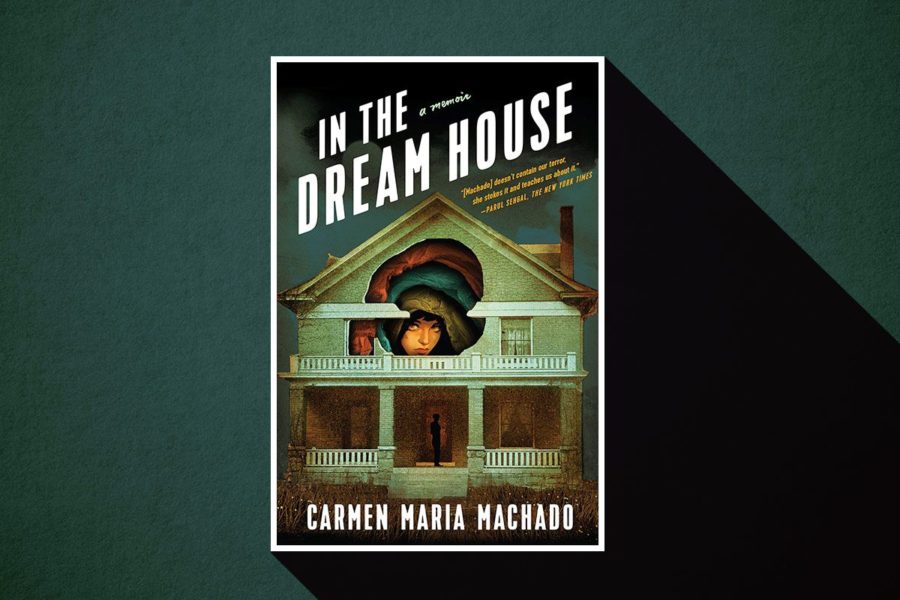In the Dream House and Why Queer Representation is Important
September 24, 2021
“I enter into the archive that domestic abuse between partners who share a gender identity is both possible and not uncommon, and that it can look something like this. I speak into the silence.” So opens Carmen Maria Machado’s powerful and intense memoir about her experience with queer intimate partner abuse. The novel chronicles the progression of a relationship gone bad. It begins with Carmen meeting her soon-to-be lover, who goes unnamed throughout the novel. After a short period of time, they are in a relationship filled with spark and passion. Throughout the course of their relationship, “the woman in the dream house,” as Machado calls her, will accuse her of infidelity, scream at her, gaslight her, and spew awful words at her. Most of all, she will psychologically torment her.
The arc of the relationships is laid out in short chapters, each told under a specific narrative trope. In one chapter, titled Dream House as 9 Thorton Square, Machado talks about the history of the term “gaslight.” In another chapter, Dream House as Naming the Animals, she describes the process of first naming all the animals in the Garden of Eden, and how “putting language to something for which you have no language is no easy feat.” Machado is keen on metaphors- she uses the metaphor of a “dream house” to describe her body and how her abuser crept inside and held her captive. The third-person storytelling makes it an immersive and unforgettable experience. Machado makes you uncomfortable, but grabs your attention and never lets it go. She is a true talent.
One of my favorite parts of the novel is when Machado describes psychological abuse through a “choose your own adventure” format. She starts with a situation she was in with her abuser and asks the reader what they would do in the situation. The reader soon finds that each option is bad, and leads to her partner getting upset, with some of them even leading back to the page you started on. Through this format the reader can gain a better understanding and empathize with the process of trauma and how it reoccurs.
Part of what makes this novel so gut wrenching is that Carmen didn’t feel like she had the words to describe what was happening to her. She didn’t feel like her abusive relationship lined up with what our culture perceives as domestic abuse.“Our culture does not have an investment in helping queer folks understand what their experiences mean,” Machado says after describing this experience as similar to one she had in elementary school- when she didn’t know what having a crush on a girl meant. So how can we help queer folks- especially young ones- understand what it means to be queer and give them the language to talk about it? How can we spread more awareness around queer abuse stories? As Carmen says in her novel, “We deserve to have our wrongdoing represented as much as our heroism, because when we refuse wrongdoing as a possibility for a group of people, we refuse their humanity.” Queerness is complex, and every story, good or bad, deserves to be told.
We must acknowledge that queer people do not get enough good representation in the media and our culture, as well as the ways that causes immense harm. We must acknowledge that domestic violence is something that can happen to anyone. It is not limited to heterosexual people. Queer people also deal with notable barriers that prevent them from coming forward about their stories, such as not wanting to be discriminated against. According to the National Coalition Against Domestic Violence, “in 2012, fewer than 5% of LGBTQ survivors of intimate partner violence sought orders of protection.”
After acknowledging the issue, we must begin to take action. We must educate ourselves and listen to stories of LGBTQ domestic abuse survivors.
Some links to educate yourself on domestic abuse in the LGBTQ community:
Common Myths about LGBTQ Domestic Violence
Intimate Partner Violence and Sexual Abuse Among LGBT People
Lesbian, Gay, Bisexual, and Transgender Domestic Violence in 2002
Naming the Violence: Speaking Out about Lesbian Battering (Book)
Contextualizing Domestic Violence from a LGBTQ Perspective
Relationship Violence in LGBTQ Commmunites- Moving Beyond a Gender Based Framework






























































































































Lucie E Carriker • Sep 27, 2021 at 10:11 am
Given the impact I felt just from reading this review, I cannot wait to ride the emotional roller coaster that must be this book. Hazel, I’m quite certain you have done Ms. Machado proud with this article. I look forward to reading whatever you write next.
Kai • Sep 27, 2021 at 10:06 am
I really like this article! Very informative and interesting!
Aubrie Sandoval • Sep 27, 2021 at 10:05 am
Oh wow, you are a really talented writer. I can’t hear your voice but you make it seen in a really nice way. I now have a new book to read.
grace • Sep 27, 2021 at 10:05 am
This article made me very interested in the book.